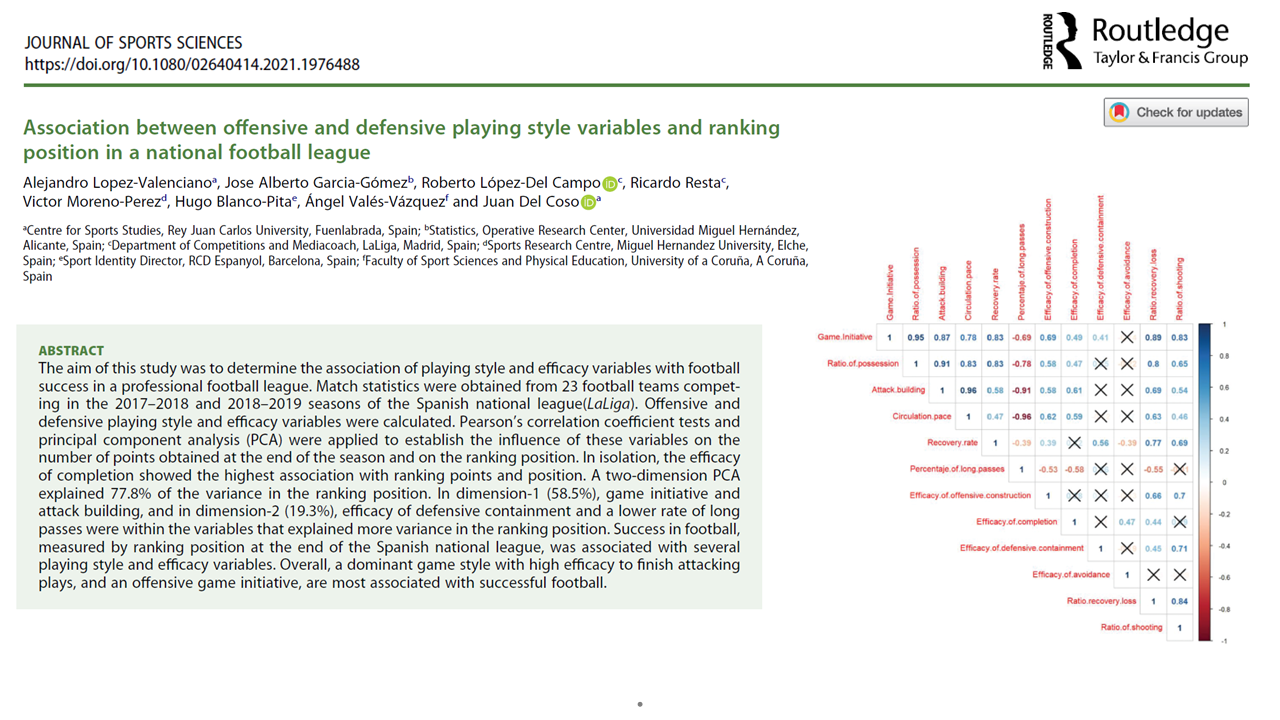
09 Sep Association between offensive and defensive playing style variables and ranking position in a national football league
This study explored what really separates top teams from those struggling at the bottom of LaLiga. Using data from two full seasons, researchers looked at how offensive and defensive playing styles connect with a team’s final ranking.
The clearest takeaway is simple: finishing efficiency matters more than anything else. Teams that consistently turn attacks into goals finish higher in the table, regardless of how many chances they create. Building attacks and circulating the ball at pace also play a key role, while relying too much on long passes tends to hurt performance.
When combining all the data, the analysis showed that offensive style explains most of a team’s success. Having the initiative, controlling possession with purpose, and being efficient in front of goal are strongly linked with qualifying for European competitions. Defensive stability—especially the ability to contain opponents—still matters, but it is secondary compared to offensive efficiency.
From a practical perspective, this means coaching staff should focus on:
- Maximizing finishing efficiency: quality of shots over sheer volume.
- Attack building and circulation pace: structured possessions that create high-value opportunities.
- Balanced style: while defense is important, winning leagues requires a dominant and effective offensive game.
For example, during the studied seasons, FC Barcelona stood out by combining attacking initiative with strong defensive containment—an integrated model that led to consistent success. Other teams like Atlético de Madrid (defense-first) or Real Madrid (attack-first) also performed well, but the most balanced model delivered the league title.
In short: teams that finish well and play with offensive initiative outperform those relying only on defense or direct play. For technical staff, this underlines the importance of designing training and match strategies that combine attacking efficiency with tactical balance.
Read the full paper here: https://doi.org/10.1080/02640414.2021.1976488


